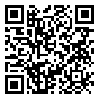1. Yairi E, Ambrose NG. Early childhood stuttering I: Persistency and recovery rates. Journal of Speech, Language and Hearing Research. 1999;42 (5) :1097. [
DOI:10.1044/jslhr.4205.1097]
2. Yairi E, Ambrose NG. Early childhood stuttering for clinicians by clinicians: Pro Ed; 2005.
3. Proctor A, Yairi E, Duff MC, Zhang J. Prevalence of stuttering in African American preschoolers. Journal of Speech, Language and Hearing Research. 2008;51 (6) :1465. [
DOI:10.1044/1092-4388(2008/07-0057)]
4. Vanryckeghem M, Brutten GJ, Hernandez LM. A comparative investigation of the speech-associated attitude of preschool and kindergarten children who do and do not stutter. Journal of Fluency Disorders. 2005;30 (4) :307-18. [
DOI:10.1016/j.jfludis.2005.09.003]
5. Bluemel C. Primary and secondary stammering. Quarterly Journal of Speech. 1932;18 (2) :187-200. [
DOI:10.1080/00335633209379870]
6. Ambrose NG, Yairi E. The development of awareness of stuttering in preschool children. Journal of Fluency Disorders. 1994;19 (4) :229-45. [
DOI:10.1016/0094-730X(94)90002-7]
7. van der Merwe B, Robb MP, Lewis JG, Ormond T. Anxiety measures and salivary cortisol responses in preschool children who stutter. Contemporary Issues in Communication Science and Disorders. 2011;38:1-10. [
DOI:10.1044/cicsd_38_S_1]
8. Bajaj A, Hodson B, Westby C. Communicative ability conceptions among children who stutter and their fluent peers: A qualitative exploration. Journal of Fluency Disorders. 2005;30 (1) :41-64. [
DOI:10.1016/j.jfludis.2005.01.002]
9. Boey RA, Van de Heyning PH, Wuyts FL, Heylen L, Stoop R, De Bodt MS. Awareness and reactions of young stuttering children aged 2-7 years old towards their speech disfluency. Journal of communication disorders. 2009;42 (5) :334-46. [
DOI:10.1016/j.jcomdis.2009.03.002]
10. Cardell EA. Communication attitude test for preschool and kindergarten children who stutter (KiddyCAT) . International Journal of Disability, Development and Education. 2010;57 (2) :236-8. [
DOI:10.1080/10349121003751131]
11. Craig A, Hancock K, Tran Y, Craig M. Anxiety levels in people who stutter: A randomized population study. Journal of Speech, Language and Hearing Research. 2003;46 (5) :1197. [
DOI:10.1044/1092-4388(2003/093)]
12. Kawai N, Healey EC, Nagasawa T, Vanryckeghem M. Communication attitudes of Japanese school-age children who stutter. Journal of communication disorders. 2012;45 (5) :348-54. [
DOI:10.1016/j.jcomdis.2012.05.004]
13. Curlee RF, Yairi E. Early intervention with early childhood stuttering: A critical examination of the data. American Journal of Speech-Language Pathology. 1997;6 (2) :8. [
DOI:10.1044/1058-0360.0602.08]
14. Onslow M, Packman A, Harrison E. The Lidcombe Program of Early Stuttering Intervention: A Clinicians's Guide: Pro-ed; 2003.
15. Onslow M. Treatment of stuttering in preschool children. Behaviour Change. 2004;21 (04) :201-14. [
DOI:10.1375/bech.21.4.201.66104]
16. Clark CE, Conture EG, Frankel CB, Walden TA. Communicative and psychological dimensions of the KiddyCAT. Journal of communication disorders. 2012;45 (3) :223-34. [
DOI:10.1016/j.jcomdis.2012.01.002]
17. Vanryckeghem M, Brutten E. Communication Attitude Test for Preschool and Kindergarten Children Who Stutter: San Diego, CA: Plural Publishing; 2007.
18. Guitar B. stuttering: An integrated approach to its nature and treatment. 3rd ed;2006.
19. Courtney D, Grace G, Laura H. stuttering the assessment resource (STAR) . Australia La Trobe University; 2011.
20. Węsierska K, Vanryckeghem M, Jeziorczak B, Wilk B. Porównanie postaw komunikacyjnych mówiących płynnie i jąkających się polskojęzycznych dzieci w wieku przedszkolnym [A comparison of communicative attitudes of stuttering and nonstuttering Polish-speaking preschool children]. Forum Logopedyczne. 2014; 22: 70-9.
21. Vanrobaeys S. KiddyCAT: Een test-hertest betrouwbaarheidsonderzoek bij stotterende en niet-stotterende kleuters [KiddyCAT: A test-retest reliability investigation with stuttering and nonstuttering children]. Belgium: University of Gent; 2010.
22. Gustavsson M, Karltorp L. Norm values for Communication Attitude Test for Preschool and Kindergarten Children Who Stutter (KiddyCAT) for Swedish children age 3-6 years. Sahlgrenska Academy: University of Gothenburg; 2010.
23. Bakhtiar M, Seifpanahi S, Ansari H, Ghanadzade M, Packman A. Investigation of the reliability of the SSI-3 for preschool Persian-speaking children who stutter. Journal of Fluency Disorders. 2010;35 (2) :87-91. [
DOI:10.1016/j.jfludis.2010.02.003]
24. Tahmasebi-Garmatani N, Shafie B, Feizi A, Salehi A, P H. Determination of the reliability of the stuttering severity instrument-fourth edition specific adults who stutter. J Res RehabilSci. 2012; 8 (4) :1-7[Persian].
25. Bullinger M, Alonso J, Apolone G, Leplège A, Sullivan M, Wood-Dauphinee S, et al. Translating health status questionnaires and evaluating their quality: the IQOLA project approach. Journal of clinical epidemiology. 1998;51 (11) :913-23. [
DOI:10.1016/S0895-4356(98)00082-1]
26. Shultz K, Whitney D. Measurement theory in action: Case studies and exercises. Sage Publication. 2005.
27. Polit DF, Beck CT, Owen SV. Is the CVI an acceptable indicator of content validity? Appraisal and recommendations. Research in nursing & health. 2007;30 (4) :459-67. [
DOI:10.1002/nur.20199]
28. Bland JM, Altman DG. Statistics notes: Cronbach's alpha. Bmj. 1997;314 (7080) :572. [
DOI:10.1136/bmj.314.7080.572]




